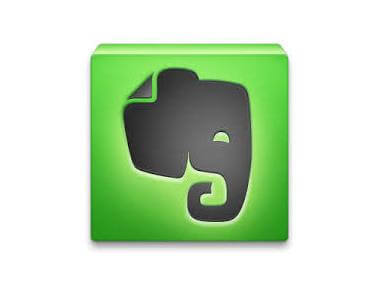How to Protect Your Digital Files (Part 2)
As more and more of our lives are stored on computers, it’s easy to rely on technology and forget that a small glitch can lead to catastrophe. Get-It-Done Guy has more tips on keeping your work safe (Hint: It involves regular backups).
This is Stever Robbins. Welcome to the Get-it-Done Guy’s Quick and Dirty Tips to Work Less and Do More.
In Part 1 of this series on digital files you heard about my friend who lost seven years’ worth of MIT thesis work because they didn’t have good backups of their desktop machine.
Having on-site backups is one way to recover when you have a fight with your thesis advisor, drag your thesis to the trash, and click Empty Trash thinking “That’ll show you, Stupid Advisor!!” Er, yeah. Deleting your thesis to get back at your advisor? N-i-i-i-ice.
But on-site backups still suffer from a problem. When a dimensional portal opens up by your computer and sucks your processor and backup drives into the Enchanted Forest, you lose everything.
That’s why you need to open your own dimensional portal and store your backups there, too. Fortunately, we have such a portal. It’s called the Cloud. Cloud backup programs store your backups in off-site servers, where you can get to them even if your physical computer and disk drives become incapacitated.
But beware!
Although cloud backup providers paint a rosy picture of milk and honey when describing their services, they are far from perfect. Here are a few things to watch out for when storing in the cloud:
You Can’t Store it All
Storing terabytes of data in the cloud isn’t feasible. Unlike physical hard drives, data is slow to upload to the cloud (you try sending photos to an enchanted forest with all those weeds!). Plus many cloud backup services charge based on how much you store.
For the cloud storage, decide explicitly what you’ll back up. You’ll almost certainly back up you Documents folder, and if you’re on a Mac, your ~/Library/Preferences/ folder as well.
Reliability Is Tricky
You owe it to yourself (and your future survival) to understand the truth about the reliability of cloud resources. When you store backups at home, you’re vulnerable to dimensional portals. When you store backups in the cloud, you’re vulnerable to your provider’s data center having a dimensional portal. You’re vulnerable to a power loss between you and your provider. You’re vulnerable to a communications loss between you and your provider.
And what if your data is hacked or encrypted and held for ransom? My local hospital recently lost all their medical records to a ransomware attack. I’m not supposed to know about it, but an insider friend of mine told me.
Also, if there is an irregularity with your account, the cloud service provider could simply remove your access to your backups. I had this happen once, when a video file I was editing was mistakenly flagged as a pirated mainstream video. While I was flattered they thought me talking into a webcam was the equivalent of Patrick Stewart playing Professor X, it didn’t make up for the week it took to regain access to my files.
This means you should keep those local backup drives to complement your cloud storage!
Security Is Nonexistent in the Cloud
Cloud storage reliability can be bad, but their security is laughable. Cloud providers assure you that your data is secure and private and all that stuff. They have policies. And those policies don’t penalize the company in any way whatsoever if it turns out that your data isn’t secure and private, after all. So let’s be blunt: They’re not worth the paper they’re written on.
So what if your data is stolen from the cloud by Evil Doers? They could grab your bank statements, your private correspondence, and even your secret family recipe for avocado marmalade. And then, where would you be? There’s nothing more demoralizing than having a group of malicious Russian hackers become billionaires by marketing a line of avocado marmalade that you know really belongs to you. (Canadian hackers, on the other hand, aren’t a worry. They would graciously send you your share of the profits without even being asked.)
Your cloud backups may also be visible to U.S. intelligence agencies and law enforcement. Some providers will hand it over without a warrant. Others only hand it over with a warrant. And still other providers have been infiltrated by intelligence agencies and don’t even know that they’re handing over your data. Whichever way you slice it, no one will ever tell you that you’ve been breached.
So how to make sure your data is safe in the cloud?..
You Need Zero-Knowledge
For security, choose a cloud backup provider that provides Zero-Knowledge Encryption. Zero-knowledge encryption means that only you have your encryption password. Your cloud provider has zero-knowledge. They can’t access your data, even if they want to, and neither can anyone who breaks into their systems. But remember your backup password! If you forget it, no one will be able to access your backups.
Which App to Use
I’ve compiled a list of the backup applications that provide the best service and security in the cloud. All of these are zero-knowledge:
SpiderOak One runs on all major platforms, even Linux. When you delete a file, the prior versions of the file will remain in your backup until you tell Spider Oak to delete them. That makes SpiderOak great for recovering long-ago-deleted versions of files. They also have an iOS app so you can access your files from an iPhone. The downside is that I’ve found the interface a bit clunky and slow. With SpiderOak, you can have one account with multiple computers. You pay based on how much total storage you use.
Backblaze runs on Mac and PC and also has a mobile app. Backblaze emphasizes ease-of-use and charges per-machine, giving you unlimited storage per machine. For a single computer, Backblaze is less expensive than SpiderOak. But if you have multiple machines, it’s worth comparison shopping if price is your main consideration.
ARQ is a backup app that does regular backups, but doesn’t come with its own cloud storage. ARQ is a one-time purchase, and then you back up to an Amazon AWS account, or Rackspace, or an FTP server, or Google Drive, or … whatever cloud you choose to use. Since ARQ encrypts your backups, you can use any cloud storage and know your backups are private. I use ARQ to create extra backups of my most critical files on Amazon AWS and Google Drive.
oDrive is like ARQ, in that it’s a backup program that backs up to any (or all!) of the clouds you can access. But oDrive goes further. It lets you share files and folders by generating sharing links. It gives you fine-grained control over who can access different files and how. Unlike ARQ, oDrive requires an ongoing subscription to use the zero-knowledge encryption. Their free plan is not zero-knowledge. Also, oDrive’s paid plan lets you move files to your oDrive but still access them as if they were local. So you get the benefits of a local file while not using the disk space.
pCloud is an odd mix of backup and file sharing. It creates a virtual drive on your computer. Move files into that drive and, just like oDrive’s premium feature, they get stored in the cloud. You can still access them as if they were on your desktop; they’re pulled down from the cloud as needed to your local machine. pCloud provides file sharing links as well. I store my large media files in a pCloud drive so they don’t take up too much disk space.
You can also buy a Crypto add-on, which gives you a special zero-knowledge encrypted folder on your pCloud drive in which everything is encrypted. Unlike oDrive, which is pay-as-you-go, pCloud offers lifetime subscriptions that you can pay upfront. I have their 2Tb-plus-crypto lifetime plans, because I like the pay-once model.
Practice Safe Computing
Don’t let your work be destroyed when a dimensional portal opens up nearby! In addition to your on-site backups, use a cloud backup. Back up at least your Documents folder and important preferences. Choose a provider that gives zero-knowledge encryption, set it all up, and then go about your day knowing your electronic life is safe and sound if you ever need it.
I’m Stever Robbins. Follow GetItDoneGuy on Twitter and Facebook. If you’re an entrepreneur, self-employed or otherwise need to control your own time, Get-it-Done groups help you start finishing what’s important, and develop the habits you need to be hyper-productive. Learn more at Stever Robbins.
Work Less, Do More, and have a Great Life!
Computer backup image courtesy of Shutterstock.






